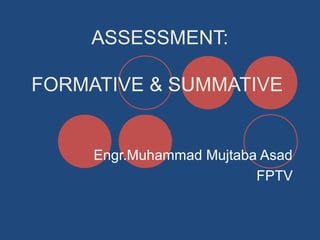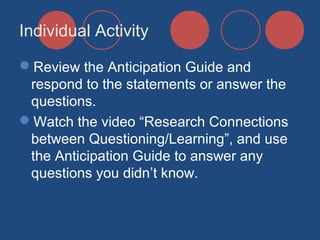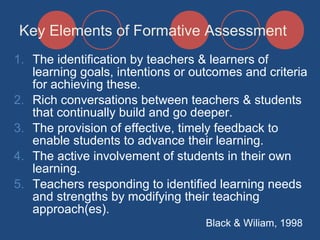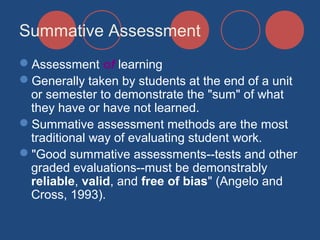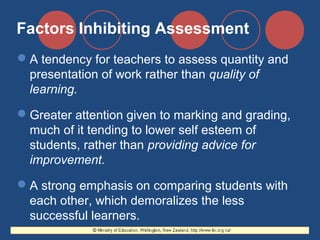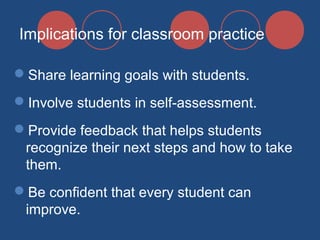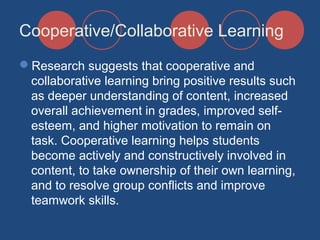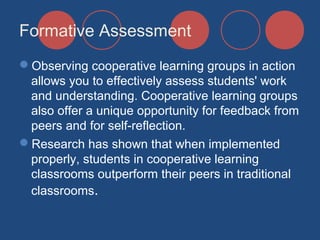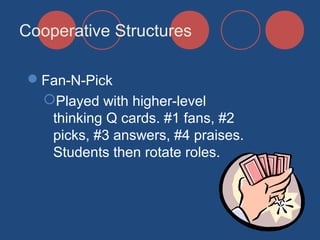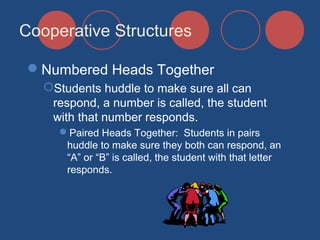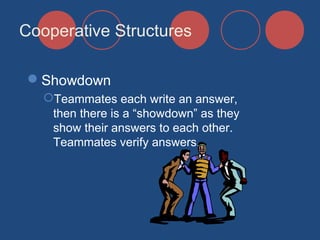1. Formative assessment occurs during instruction and provides feedback to improve teaching and learning, while summative assessment occurs after instruction to evaluate student achievement and program effectiveness.
2. Both formative and summative assessments are important, but formative has the greatest impact on learning when teachers use feedback to adjust instruction.
3. Cooperative learning can be used for formative assessment by observing student understanding during group work and providing feedback to improve learning.
